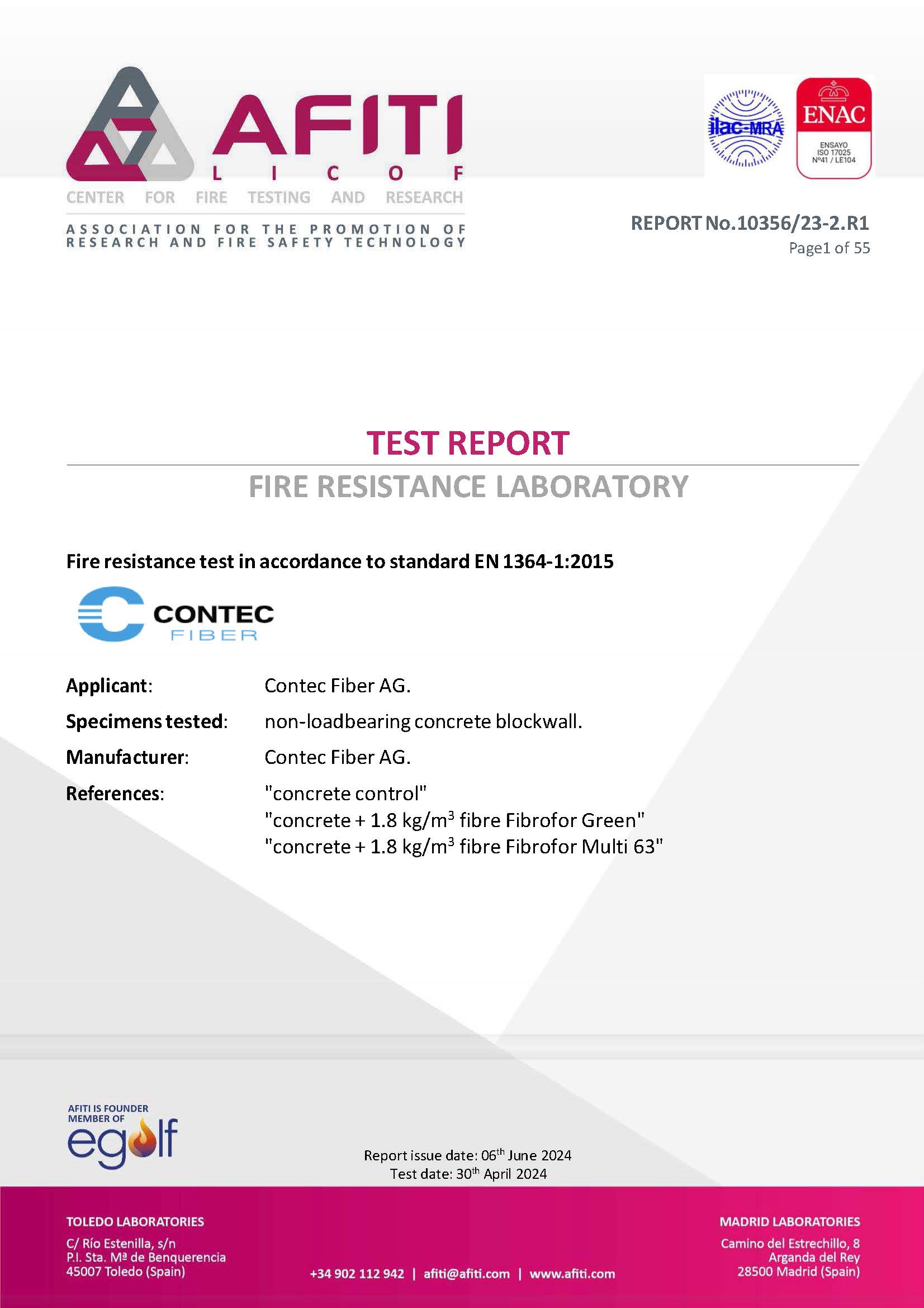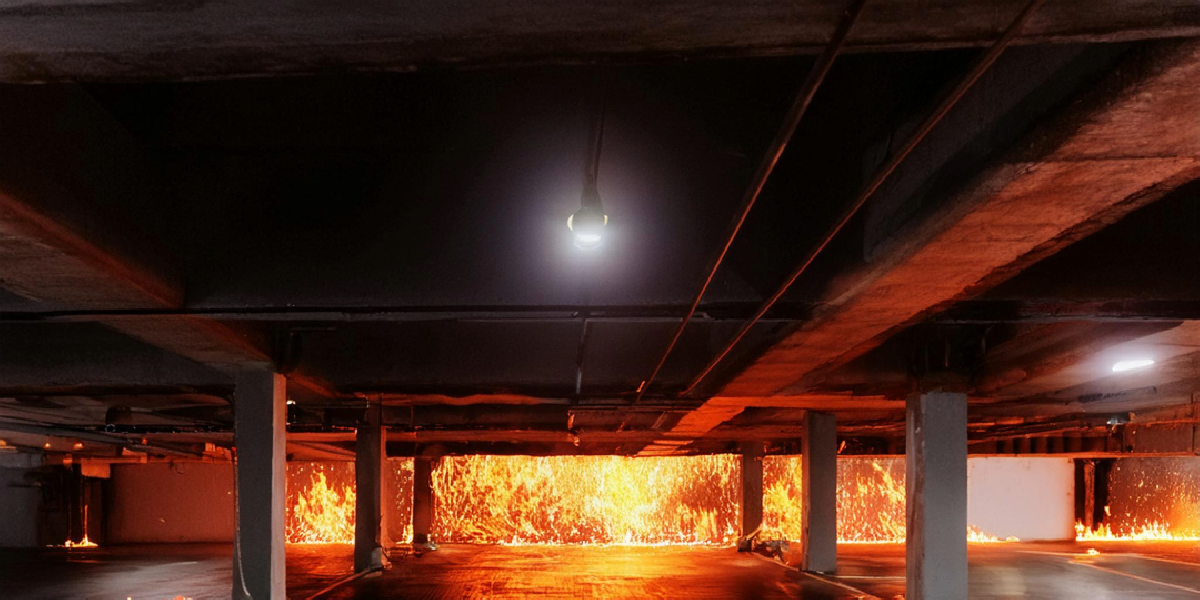Fire Protection of Concrete Structures with PP Fibers
The retroactive fire protection of building structures can be extremely costly. However, if attention is paid to this during the construction phase, even the reinforced concrete structures of very large buildings can be protected at a ridiculously low cost. Mixing polypropylene fibers into the raw concrete can be part of passive fire protection, creating a reinforced concrete structure with enhanced fire resistance. This type of protection is called passive fire protection because it becomes an integral part of the concrete structure and does not require intervention in the event of a fire.
Investigations into the serious fires with many fatalities in the Mont Blanc Tunnel in March 1999, the Tauern Tunnel in May 1999, the Saint Gotthard Tunnel in October 2001, and the A1 highway tunnel in Italy in August 2008, turned attention to the concrete structures of tunnels. It was discovered that most of the victims had no chance to escape because, within the first few minutes of the fire, the heat caused concrete fragments to explode from the tunnel ceiling, effectively shooting down those trying to escape.
These horrific experiences initiated research that proved that by simply adding PP fibers to concrete, the fire resistance of reinforced concrete structures can be significantly increased. It was found that PP fibers melt at around 160-170°C, while the concrete remains stable. The melting fibers create capillaries, or micro-cracks, in the concrete through which the superheated steam can escape. This mechanism reduces the explosive failure of concrete at high temperatures.
Based on this research, this simple solution has been widely adopted globally. Due to previous disasters, the industry and the public primarily focused on tunnel construction, leading to the first mass applications in these areas: the Channel Tunnel Rail Link Project (2007), Gotthard Base Tunnel in Switzerland, Doha Metro in Qatar, London Crossrail in England, Copenhagen Metro in Denmark, the Los Angeles Metro system, and the Hong Kong Metro.
Tests show that the dangerous spalling occurs within the first 20-30 minutes of a fire when the concrete temperature is still only between 150-250°C.
Theories explaining how and why explosive cracking occurs largely focus on moisture movement. As the temperature of the concrete increases, the moisture in the concrete turns into steam. If this steam cannot escape from the concrete mass, it causes a dramatic increase in pressure within the concrete. As this process continues, the steam pressure increases to the point where it exceeds the tensile strength of the concrete, causing large pieces of concrete to explosively eject from the structure. Explosive spalling of concrete can pose a serious risk to the structural integrity of the building due to the loss of concrete cross-section and/or the buckling of the embedded steel reinforcement when exposed to high temperatures. On its own, the fire resistance of steel is very low, and its temperature rise is very rapid due to its excellent thermal conductivity. In the event of a fire, uncoated steel loses its load-bearing capacity very quickly, posing a risk of structural collapse. However, in the case of reinforced concrete, the steel reinforcement can be well protected with adequate concrete cover.
Several factors influence the degree of explosive cracking in concrete, so it is necessary to improve the fire resistance of concrete. Modern construction technologies often require much higher concrete strength than was used decades ago. Modern, higher-strength concrete also increases the density of the concrete. In dense, high-strength concrete, moisture escape is hindered due to changes in the pore structure, effectively trapping the moisture. The resulting fire begins to develop superheated steam and increased internal stresses, contributing to explosive cracking. This increased density is one of the main reasons why explosive spalling has become more common in recent fire incidents.
The addition of polypropylene (PP) monofilament microfibers to concrete is now widely accepted as a means to prevent explosive spalling. When dosing PP microfibers for passive fire protection purposes, the specifications of the concrete and the fire hazard assessment must be taken into account.
Section A 6.1 of EN 1992 Eurocode 2 recommends the use of 2 kg/m³ of monofilament polypropylene PP microfibers to prevent explosive cracking in high-strength concrete. However, several studies have been conducted, and dosage rates between 1.0 and 1.5 kg/m³ have also been found satisfactory in certain specific cases. For example, the EN 1364-1:2015 standard test conducted at the AFITI laboratory in Spain on Contec Fiber showed that a dosage of 1.8 kg of Fibrofor Multi microfibers was sufficient. When determining the dosage of PP microfibers, it should also be noted that the microfibers tend to become electrostatically charged during mixing with fresh concrete, thereby introducing unwanted air bubbles into the concrete mix, which can significantly reduce the strength of the concrete. Therefore, it is necessary to find an optimum that is sufficient to meet the requirements of passive fire protection but still acceptable from the perspective of concrete strength.
The spalling of concrete in the event of a fire can be further reduced by specific technological measures, such as selecting low thermal expansion, thermally stable aggregates.
The effectiveness of our Fibrofor MULTI and Fibrofor GREEN fibers is certified.







